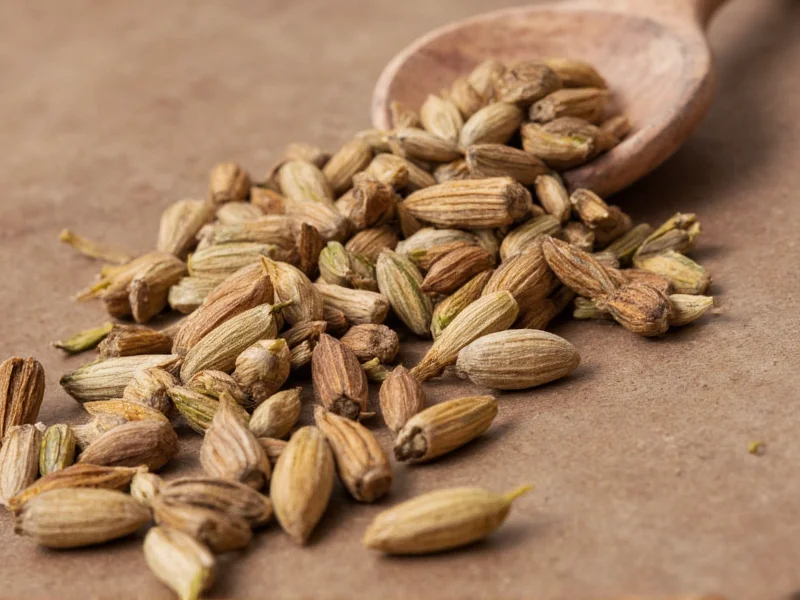Cardamom, often called the “Queen of Spices,” delivers a complex flavor profile blending citrus, floral, and herbal notes. Proper usage transforms ordinary dishes into aromatic masterpieces across global cuisines. This guide details precise techniques for maximizing cardamom's potential in your kitchen.
Understanding Cardamom Forms
Cardamom appears in three primary forms, each requiring specific handling:
| Form | Best For | Preparation Method | Shelf Life |
|---|---|---|---|
| Green pods (Elettaria) | Baking, rice dishes, beverages | Crack pods, remove seeds, grind | 6-12 months whole, 3 months ground |
| Black pods (Amomum) | Indian curries, stews | Use whole or lightly crushed | 12-18 months |
| Ground cardamom | Quick recipes, spice blends | Measure directly | 2-3 months |
Step-by-Step Usage Guide
Follow these professional techniques for optimal results when learning how to use cardamom properly:
Preparing Fresh Cardamom
- Crack pods gently with the flat side of a knife
- Remove black seeds from husks (discard fibrous husks)
- Grind seeds using a spice grinder or mortar and pestle
- Use immediately for maximum volatile oil retention
Never substitute pre-ground cardamom for freshly ground in critical recipes. The flavor difference is dramatic – fresh grinding releases 300% more aromatic compounds according to food science research.
Precise Measurement Guidelines
Understanding cardamom measurement conversion prevents overpowering dishes. Follow these professional chef standards:
- Baking: 1 pod = 1/8 teaspoon ground = flavor for 1 standard serving
- Coffee/tea: 2-3 pods per 8oz liquid (crushed seeds)
- Rice dishes: 4 pods per cup of uncooked rice
- Curries/stews: 6 pods per pound of meat
When using how to use cardamom in baking, always fold ground spice into dry ingredients first. For cardamom in coffee recipes, add crushed seeds during brewing for optimal extraction.
Flavor Pairing Science
Cardamom's complex chemistry (containing cineole, limonene, and terpinolene) creates natural affinities with specific ingredients:
Perfect Pairings
- Dairy: Complements milk, cream, and yogurt in Scandinavian and Indian desserts
- Citrus: Enhances orange, lemon, and lime in both sweet and savory applications
- Other spices: Balances cinnamon, cloves, and nutmeg in spice blends
- Proteins: Pairs exceptionally with lamb, chicken, and white fish
For cardamom flavor pairings in Middle Eastern dishes, combine with rosewater and pistachios. In Indian cooking, it forms the base of garam masala alongside cloves and cinnamon.
Avoiding Common Mistakes
Many home cooks make these critical errors when learning how to use cardamom:
- Adding too early – volatile oils evaporate during prolonged cooking
- Using stale spice – ground cardamom loses potency within weeks
- Overestimating quantity – its strong flavor dominates other ingredients
- Ignoring regional differences – green vs black cardamom serve distinct purposes
When incorporating cardamom in Indian cooking, remember that black cardamom provides smoky depth for savory dishes, while green offers floral notes for sweets. Never substitute one for the other in traditional recipes.
Storage Techniques for Maximum Freshness
Proper cardamom storage tips maintain flavor intensity:
- Store whole pods in airtight containers away from light and heat
- Freeze pods for long-term storage (up to 2 years)
- Grind only what you'll use immediately – ground spice loses 50% potency in 30 days
- Check freshness by crushing a seed – strong aroma indicates viability
For those exploring how to use cardamom in baking regularly, consider keeping a dedicated spice grinder solely for cardamom to prevent flavor cross-contamination.
Substitution Guidance
When you need cardamom substitute options, consider these alternatives based on dish type:
- For baking: Equal parts nutmeg + cinnamon (75% effectiveness)
- For beverages: Cardamom extract (1:1 ratio) or ginger (use 50% less)
- For savory dishes: Allspice + coriander (2:1 ratio)
Remember that substitutes never fully replicate cardamom's unique profile. When possible, seek authentic cardamom at Indian or Middle Eastern markets for best results in traditional recipes.
Traditional Applications by Cuisine
Understanding regional usage patterns helps you apply cardamom authentically:
- Scandinavian: Cardamom buns use 1 pod per 250g flour
- Indian: Chai masala includes 3 pods per liter of tea
- Middle Eastern: Arabic coffee features 1 pod per cup
- Thai: Curry pastes incorporate black cardamom for depth
Mastering how to use cardamom properly requires respecting these cultural contexts. Each tradition has evolved precise ratios through generations of culinary refinement.











 浙公网安备
33010002000092号
浙公网安备
33010002000092号 浙B2-20120091-4
浙B2-20120091-4